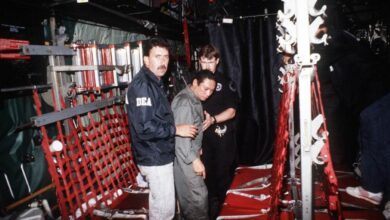Import garbage to generate energy: the model implemented by Sweden and Norway
Listen this article
Wastes have been synonymous with problems, but Sweden and Norway have implemented a new model where they are harnessed through the production of energy

By the end of 2018, Sweden and Norway stood out for recycling and reusing 96% of the waste that their population and industry generated, according to figures from La Nación. This is largely due to the implementation of a program that generates energy through the management of its waste, as well as the import of waste from other European nations.
Leer en español: Importar basura para generar energía: el modelo implementado por Suecia y Noruega
The process consists of the separation of the waste from the use of different containers and bags that differ by their color. Following this, in the processing plants, optical readers were developed that make a separation of the bags by color. The green ones, with food waste, are used for the development of agricultural fertilizers and biogas for the buses that run through the cities of both countries. The blue bags, with plastic elements, contain products that are recycled. Finally, the white bags are incinerated.
Unlike traditional processes, the solid waste processing plants of both countries have developed a water process that incinerates through 99% pure steam. After this incineration, electricity is generated that supplies 650,000 homes, study centers, and heating networks, according to official figures from both governments.
This initiative has been called Waste To Energy and it was so successful in both countries, that with the purpose of producing a greater amount of energy, it is decided to start importing energy from other European countries. From a study conducted by Deutsche Welle, it was identified that countries like England are charged between € 30 and € 40 for each ton of imported waste.
In Sweden and Norway, the amount of waste to be processed has already been exceeded, which is why the import of waste has been a model that has contributed economically to both countries. In addition, the import also generates a positive impact on the environment to the extent that the amount of waste from other countries is reduced, which is processed to generate energy.
Read also: Yes but no to fracking in Colombia: Commission of experts
Pal Mikkelsen, director of the municipal garbage processing agency in Oslo, during an interview with La Nación, said that in this city approximately 300,000 tons of garbage is processed per year, where 30% of the waste used is imported.
On the other hand, according to the official report of the Swedish government of 2018, it is highlighted that the country has imported 2.7 million tons of waste from other European countries. In this way, it shows how this program has been innovative in that it has revolutionized the cycle of waste management in Europe, which certainly could be replicated in other parts of the world.
The Waste To Energy process has represented a change in the daily life of the citizens of Sweden and Norway as well, this because they have had to transform the way to manage their own waste, getting involved in the process of energy production. This type of actions are fundamental in the process since, as a consequence of the implementation of the program, awareness is generated regarding the importance of separation for their own benefit and a higher quality of life.
According to the Swedish Environmental Agency (Naturvårdsverket), part of the success of the program is the government effort. On the one hand, recycling points are installed in residential areas every 600 meters, and in addition, awareness campaigns with the slogan of "Zero Waste" are ongoing.
Lars Haltbrekken, president of Friends Of The Earth (Naturvernforbund), the oldest group of environmentalists in Norway, mentions that "we must have a global vision of caring for the planet, and we can not encourage other countries to get rid of their garbage because they know that finally the Norwegians and other Nordic peoples have the capacity to process it. "
In its study of the countries with the best quality of life in environmental terms, El País, places Sweden and Norway among the first in the ranking, since in addition to implementing an innovative model of energy production, they also strive to involve the population civilization in issues of awareness regarding the care of the planet. Considering this, it is evident that the energy production model of both countries goes beyond the production chain, has also been directed towards the very life of its citizens and their perception of the environment.
LatinAmerican Post | Alejandra Caballero
Translated from "Importar basura para generar energía: el modelo implementado por Suecia y Noruega"





